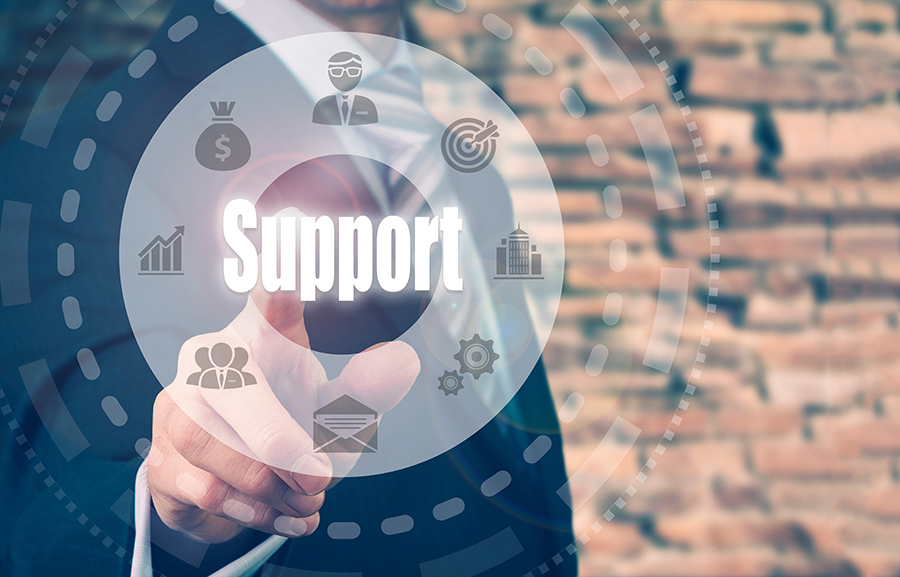Returning to Work After Brain Injury
By Christina Eichelkraut
The Brain Injury Alliance of Arizona has always given an honest platform to many brain injury survivors who have returned to work. They’ve shared their successes, challenges, and tips. We even asked experts for advice, too.
Returning to work after a brain injury is a huge milestone for survivors. It marks a return to normalcy after a period that may have included long-term hospitalization, physical rehabilitation, mental and emotional recovery and the resilience of adapting to a new normal.
Today, we’re highlighting some of the best advice and guidance we’ve received from both survivors and the healthcare specialists who help them get back to work.
Usually, the biggest step a brain injury survivor can take in creating a successful return to work is to speak up for what they need to succeed.
Returning to Work After Brain Injury
By Christina Eichelkraut
The Brain Injury Alliance of Arizona has always given an honest platform to many brain injury survivors who have returned to work. They’ve shared their successes, challenges, and tips. We even asked experts for advice, too.
Returning to work after a brain injury is a huge milestone for survivors. It marks a return to normalcy after a period that may have included long-term hospitalization, physical rehabilitation, mental and emotional recovery and the resilience of adapting to a new normal.
Today, we’re highlighting some of the best advice and guidance we’ve received from both survivors and the healthcare specialists who help them get back to work.
Usually, the biggest step a brain injury survivor can take in creating a successful return to work is to speak up for what they need to succeed.
For the Brain Injury Survivor
Confront and Release Any Shame, Resentment or Limiting Beliefs
Many brain injury success stories focus on practical tips and accommodations (and we’ll get to those soon, too). But what isn’t frequently discussed is the personal, emotional, and psychological barriers that can make a return to work extra challenging.
If you, as a brain injury survivor, used to be known as the person who was always on time or never missed replying to an email, grappling with new short-term memory issues or time blindness can be extremely disorienting and deeply discouraging.
Feeling like you shouldn’t “have” to help with “simple” tasks to succeed at work is normal. It’s a huge change. We live in a competitive society and workplaces are often no different. And – let’s be real – in America people with disabilities aren’t exactly treated with the most compassion or respect much of the time. Add to that an “invisible” disability and you’ve got a perfect storm of a mental state that doesn’t allow for success with external factors that reinforce self-limiting beliefs. A Marvel superhero couldn’t meet a work deadline under those conditions.
But, all hope is not lost.
If you’re a survivor struggling with this internal battle and shame, remember this: your brain still works, it just works differently. And to some extent — generally speaking – that difference only diminishes your ability to succeed at work the degree you allow it to.
Time blindness, neurofatigue, brain fog, short- and long-term memory issues can either rule your work day or you can acknowledge they exist, accept them, and then request the accommodations you need.
As a brain injury survivor, you’re already likely a walking miracle. If you have relearned to walk, then every step you take, even to the fridge for a glass of water, is extraordinary. So if you need to use a task reminder app, or ask for more breaks to avoid neurofatigue, or put everything on your desk where you can see it so you don’t forget about it, that isn’t a reminder of what you can’t do or what you aren’t. It’s a reminder of how far you’ve come and how remarkable you are.
On a more practical level, it’s worth remembering that reasonable accommodations are legally protected. While you may not have the most understanding boss or colleagues, the fact remains what is reasonably necessary for you to meet the expectations of your employment is not up to them. It’s up to you and, in most cases, backed by the law.
In most cases, when it comes to work, it’s not how you did the job; it’s that the job got done on time and correctly. For all you know, your doctor or accountant may be using three separate apps and Post-Its to remember things for your next appointment. But if they do their job well and show up on time, you don’t care. The same is likely true for you professionally as a brain injury survivor.
There’s an app for that.
Whatever your brain injury-related workplace issue is, there’s probably an app or software platform for it. Even emotional regulation issues can be partly mitigated with meditation and mindfulness apps.
If the program or software is expensive, there may be a program that will help fund it, or, in some cases, software companies grant free licenses for people with disabilities. A supportive workplace will likely fund a platform that enables you to work well, too.
A word of caution, however. Be mindful about what problem you are using an application or software to solve. If you get overwhelmed by four separate to-do apps and don’t consistently use any of them, then this strategy is not working. It may be time to pivot to good old-fashioned paper and pen or set simple timer reminders on your smartphone.
If something doesn’t work, drop it. If it does – great! Be sure to share it with other members of the brain injury community because it may help them, too.
Don’t fall into analysis paralysis, either. Try one app for one problem at a time, give that app your sole focus for a set period – maybe a week or two – and if works, great. If not, next.
Again, asking for advice from our robust and supportive brain injury community can help save you time, too. The best advice will always be from someone else who “gets it.”
There’s an entire community, too.
It may not be a club you’d stand in line all night to join, but you’re now part of the brain injury community.
The silver lining of this admittedly dark cloud is that it means there’s an entire support network of fellow survivors, caregivers, professionals, paraprofessionals and organizations at the ready to help you every step of the way, especially when it comes to successfully returning to the workforce.
Whether it’s the Department of Economic Security enrolling you in a program (not so fun) or a board game night with BIAAZ, where you trade tips and tricks with others (tons of fun), we guarantee there is at least one emotionally safe human being in this community who can offer support and practical guidance.
Usually, the biggest step a brain injury survivor can take in creating a successful return to work is to speak up for what they need to succeed.
For Employers of Brain Injury Survivors
Employing a brain injury survivor can be beneficial both to an organization and the larger community as a whole.
However, it does come with some consideration for both parties – the employer and the employee.
As an employer, you can proactively do several things to ensure that your employees can help your organization succeed.
Question first.
Brain injury survivors are sometimes returning to work while adapting to huge changes in their physical and mental capacity. It doesn’t mean they can’t do a job well, but it does mean they may still be figuring out what they need to be successful.
If objectives aren’t being met or it looks like your employee is struggling, approach any conversations about this issue from a curiosity mindset. Meaning asking questions first. Where are they struggling? What would help them? What can be changed to remove the challenge?
Both you and your employee want to be successful. It’s important to remember you’re on the same side and, often, missed deadlines, unreturned messages or tardiness aren’t intentional on the brain injury survivor’s part. It’s a discovery process for them and you.
Business must move forward, and time constraints and deadlines are real. But, when able, try putting an accommodation in place for a set amount of time and see how that works for both of you.
Be adaptable.
It may very well be there are certain responsibilities and duties a brain injury survivor can’t do to meet your organization’s objective needs.
Always try to consider the employee’s strengths and how those strengths can be leveraged in the organization before simply removing them from the position. Ask them for suggestions as to what the employee feels comfortable doing. It may be a matter of the right person in the wrong position, a different organizational challenge may be able to be addressed that you had not considered.
If you’re not sure, BIAAZ can connect you with rehabilitation specialists and vocational rehabilitation specialists who may be able to guide you.
Christina Eichelkraut is a recovering print journalist who founded Christina Copy Co. in 2011. When her keyboard isn’t clacking, she bakes complex artisan bread, nerds out on political science, uses her fountain pens to write to pen pals the world over, and reads long past her bedtime in a joyful disregard of her alleged adulthood. Christina earned her B.A. in Mass Communications with an emphasis in print journalism in 2006 from Franklin Pierce University.
SHARE THIS POST
ABOUT BRAIN INJURY ASSOCIATION OF ARIZONA
The Brain Injury Association of Arizona (BIAAZ) is the only statewide nonprofit organization dedicated to improving the lives of adults and children with all types of brain injuries through prevention, advocacy, awareness and education. BIAAZ also houses the Arizona Brain Health Resource Center, a collection of educational information and neuro-specific resources for brain injury survivors, caregivers, family members and professionals.
What began in 1983 as a grassroots effort has grown into a strong statewide presence, providing valuable life-long resources and community support for individuals with all types of brain trauma at no charge.








